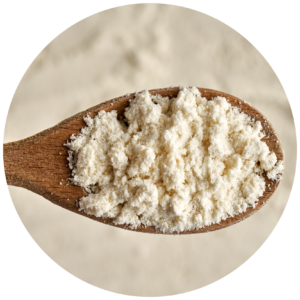GLUTEN-FREE SNACK DEVELOPMENT


Developing gluten-free snacks
can be challenging due to the difficulty in replacing the functionality that gluten proteins add to food products. Gluten is a critical element in forming the internal structure of baked goods and snack food products, and impacts elements such as texture, and surface browning, which contributes to flavor. Removing gluten also necessitates the complete removal of wheat ingredients, so replacement of starch content with other sources is also important.


When formulating without gluten, it is important to replace each of the functional benefits of gluten to ensure a good quality product. Alternative protein sources such as dairy or plant-based protein concentrate or flours can replace the nutritional contribution of gluten while also enabling the surface browning activity that contributes to pleasing flavor and color attributes. Not all proteins offer the structural benefits that gluten inherently provides, so additional ingredients may be necessary to add that functionality.
Xanthan gum is commonly used in gluten free formulations to help bind the components of dough matrices together and act as the scaffolding necessary for internal cell structure (sometimes referred to as “crumb”) formation. Alternatively, the addition of transglutaminase (colloquially referred to as “meat glue,” though it is not derived from meat) can facilitate the formation of protein bonds that will mimic the gluten structure and thus assist in developing the familiar texture of gluten containing products.


Replacing the starch from wheat flours is thankfully an easier task than replacing the gluten functionality, as there are many relatively inexpensive gluten-free starch sources available in the market. These may include but are not limited to: tapioca (cassava) starch, rice starch, pea starch, corn starch, potato starch, or any number of flours not derived from wheat or barley. Every starch has slightly different functional properties, so the assistance of a food scientist can be tremendously helpful in selecting the proper starch or starches to use in gluten free formulations.